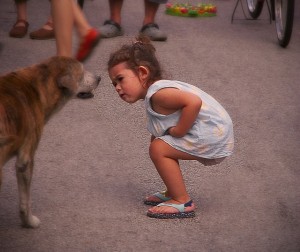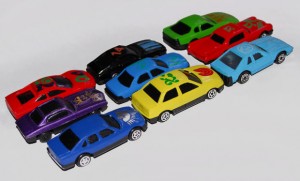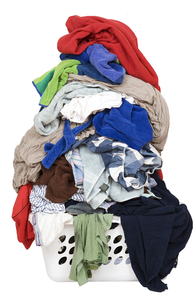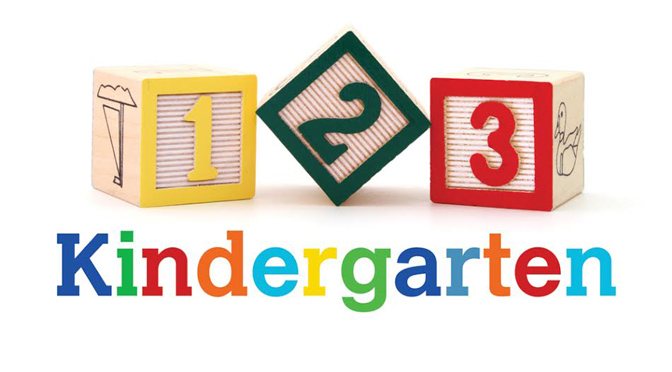Thinking involves organizing and dealing with information. One of children’s early brain tools to do that is categorizing skills. Like the movie “Honey, I Shrunk the Kids,” categorizing shrinks information into much smaller packages. It’s easier for brains to cope with these chunks than vast quantities of little bits.
 You may have noticed a very young child who has experience with a dog and soon calls every animal a dog. That child is learning to make categories and attach a word. It’s also common for wee little ones to call several men daddy until they figure out that not all adult males belong to the daddy group. Learning to use language also means learning to make categories.
You may have noticed a very young child who has experience with a dog and soon calls every animal a dog. That child is learning to make categories and attach a word. It’s also common for wee little ones to call several men daddy until they figure out that not all adult males belong to the daddy group. Learning to use language also means learning to make categories.
Children will sort and group as they play. Sometimes, the toys may be altogether in a pile, and other times they will be in their own spaces.  When we ask kids what they are doing, they will have their own logic and explanations. Perhaps, the cars and trucks will be carefully lined up and the dinosaurs in a cave made out of blocks. Or, some cars and dinosaurs will be together because they are the fastest.
When we ask kids what they are doing, they will have their own logic and explanations. Perhaps, the cars and trucks will be carefully lined up and the dinosaurs in a cave made out of blocks. Or, some cars and dinosaurs will be together because they are the fastest.
 Many tasks around the house will involve categorizing and kids can help. They can help us sort the laundry into groups, put groceries away in the right places, return items left around the house back to where they go. These use the skill of categorizing. Picking up toys can be more fun, if kids are a special robot that only gets certain toys. Set the robot buttons to only get all the blocks, then turn the switches–which means a few tickles–to get the cars and trucks, and so on.
Many tasks around the house will involve categorizing and kids can help. They can help us sort the laundry into groups, put groceries away in the right places, return items left around the house back to where they go. These use the skill of categorizing. Picking up toys can be more fun, if kids are a special robot that only gets certain toys. Set the robot buttons to only get all the blocks, then turn the switches–which means a few tickles–to get the cars and trucks, and so on.
The website Autism Journeys suggests when teaching kids to categorize, “you are not just teaching a single skill but a system for learning, problem solving and organizing. You are also teaching the foundation for processing, remembering and integrating new information.”
Can you pack your child’s brain toolbox with some categorizing skills?
